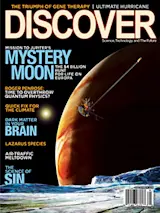Excerpted from Goodall's new book,
From Hope for Animals and Their World:How Endangered Species Are Being Rescued From the Brink, written with Thane Maynard and Gail Hudson.
In 2008, during my lecture tour in Australia, a very large, very black, very friendly Lord Howe Island stick insect (Dryococelus australis) crawled across my hands, my face and my head. The encounter sent shivers up my spine—knowing, as I did, the incredible story of how it came to be there.
The forests of Lord Howe Island, about 300 miles off the coast of New South Wales, Australia, were the only known home of the Lord Howe Island phasmid, also called a “stick insect” or “walking stick”—a creature about the size of a large cigar, four or five inches long and half an inch wide. In 1918, black rats arrived on the island after a shipwreck, relentlessly adapting to their new environment and ...














